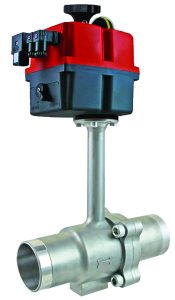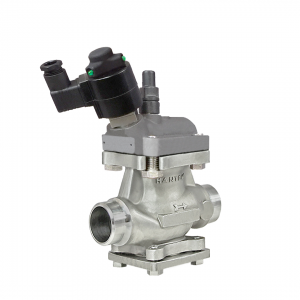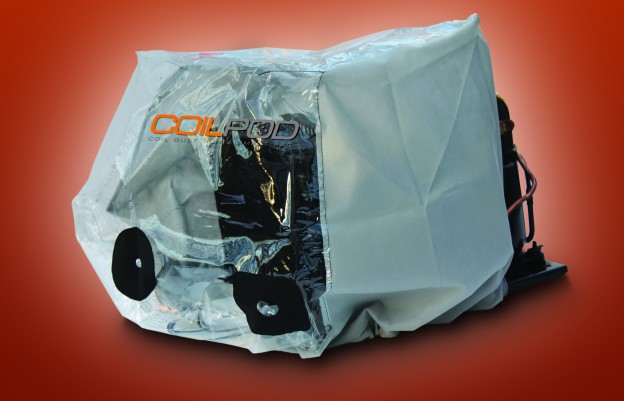THE IMPORTANCE OF REGULAR CONDENSER COIL CLEANING FOR PLUG-IN REFRIGERATORS AND FREEZERS Refrigeration and freezer appliances are major electricity “hogs” and are in all types of retail food outlets and institutions (convenience stores, restaurants, franchised fast food establishments, schools, etc.). Sadly, we are discovering that most persons and institutions owning such devices are not following an important maintenance task for their plug-in cooling appliances as recommended by the manufacturers of these appliances — regular condenser coil cleanings. The result: close to a 10% higher electricity bill for each non-cleaned refrigeration unit and close to a 20% higher bill for each freezer unit! Additionally, the non-maintained units: run less efficiently causing premature appliance ageing due to longer run times; have an increased chance of equipment failure because of higher pressures and operating temperatures; and cause unnecessary service calls. Finally, the store environment holding the unit becomes less “green”. This problem goes unrecognized because the visually non-appealing condenser coil unit is hidden behind a panel or grille. Thus, the buildup of dirt and debris is not noticed, often until a service technician discovers it on a service call made when the unit begins to malfunction. The respected Food Services Technology Center (San Ramon, CA) is a very strong condenser coil cleaning advocate: see http://www.fishnick.com/saveenergy/energytips/condensercoils/. With the projected market in just refrigerated display cases slated to grow from about $8.8 billion dollars in 2012 to about $16.3 billion dollars in 2019, this issue will grow exponentially (see http://www.digitaljournal.com/pr/1684967), especially for plug-in units which might account for almost 68% of this growth. So how is this critical maintenance program to be conducted? Since the appliances containing these condenser units are usually located inside the food establishment, the traditional cleaning method has been to use either a combination of brushing and vacuum or, even better, a combination of brushing, vacuum, with a supply of compressed air to assist in the dislodging of dirt or debris that is lodged within the coil structure. Using compressed air (e.g., from a standard wet/dry vac) is problematic since, unless contained, this air steam will pollute the store environment necessitating additional cleanup. Luckily, our COILPOD® dust containment bag (which is fully described at www.coilpod.comandshown in the accompanying photo) provides a way to encase the condenser coil structure during cleaning to practice this maintenance task in a “green” manner. It is not even necessary to have an HVAC-R service technician perform this rather non-technical cleaning task — it is definitely within the capability of even a do-it-yourselfer. Simply place the COILPOD bag over the coils, tighten the drawstring at the bottom of the bag, and blast off debris from the coils using compressed air supplied through one port in the transparent front of the bag while vacuuming it out of the bag through the other port in the bag’s front. A standard wet/dry vacuum can be employed to supply compressed air and vacuum if desired. Alternatively, a vacuum can be used with a separate source of compressed air supplied from a separate compressed air cylinder. A demonstration video showing the cleaning operation is available at:
Recently, the US-based PRSM (Professional Retail Store Maintenance) Association designated the COILPOD cleaning technique as a “best practice” method for this cleaning task. When condenser coil cleaning is now performed in an indoor setting using compressed air and vacuum, it is a two person job with one person directing the compressed air through the coil structure towards the second person who attempts to catch the blown off debris with a damp cloth or towel or, perhaps, with a large plastic garbage bag. One person can now perform the job with the COILPOD bag, and they won’t be afraid to do it during normal business hours as they might with the previously described method.
Author: Richard P. Fennelly of COILPOD.COM (www.coilpod.com).
Email: richard@coilpod.com
Twitter: @FennellyRichard
 HANTEMP Controls is an established manufacturer of Stainless Steel controlled ball valves, float switches, solenoid valves, pressure regulators and flange unions for industrial refrigeration systems including ammonia, CO2, and others. For more information, please visit www.hantempcontrols.com.
HANTEMP Controls is an established manufacturer of Stainless Steel controlled ball valves, float switches, solenoid valves, pressure regulators and flange unions for industrial refrigeration systems including ammonia, CO2, and others. For more information, please visit www.hantempcontrols.com. 

